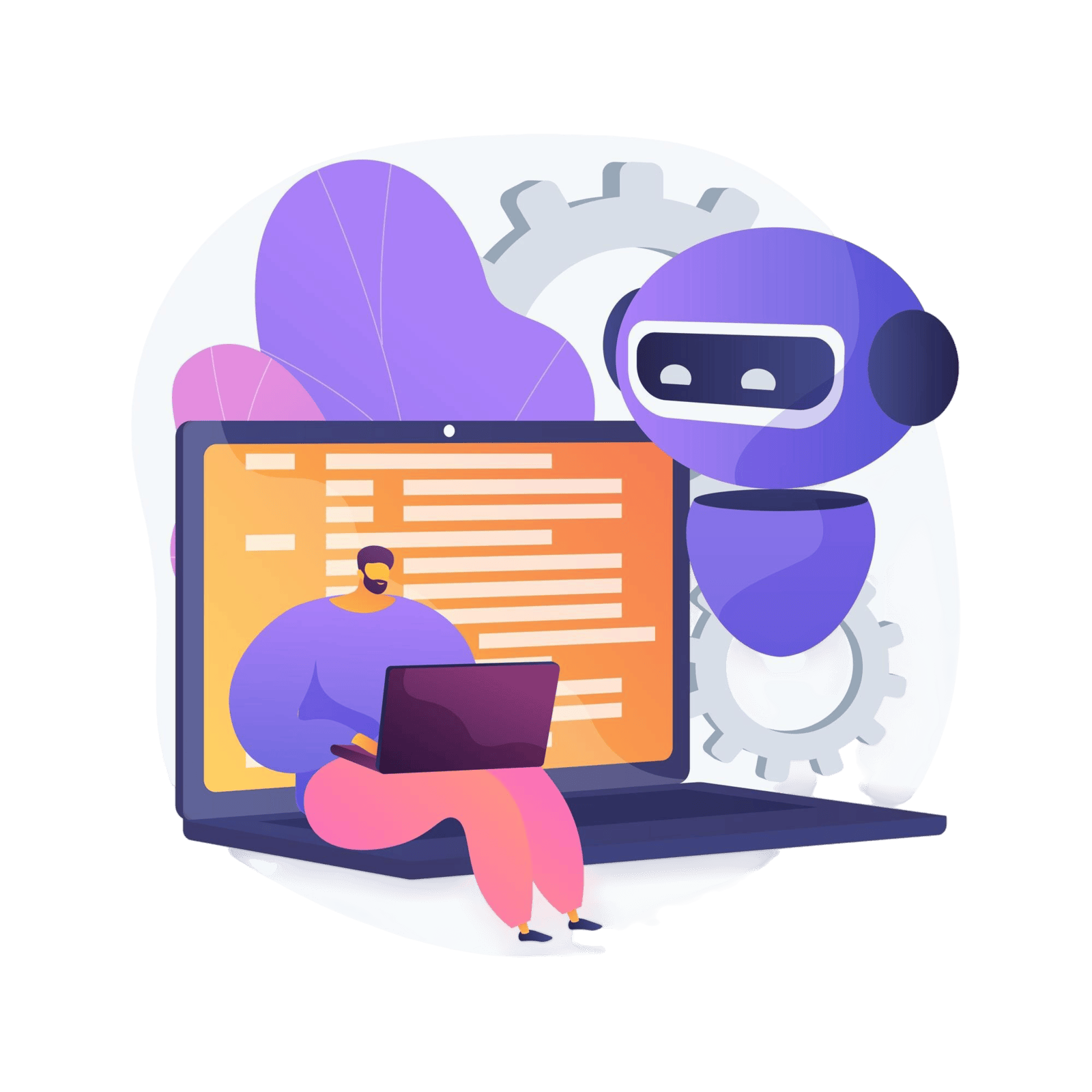
A quiet shift is happening in online learning. And many course creators haven’t noticed it yet.
While we have been focused on filming lessons, refining slides and writing worksheets…
Learners have been changing the way they engage, with or without us.
- They’re summarising lesson videos with AI tools.
- They’re using ChatGPT to research and refine their answers.
- They’re using AI to draft outlines or first attempts, just to get started faster.
- They’re brainstorming project ideas, examples or practice responses before they hit submit.
- They’re using voice-to-text tools powered by AI to capture thoughts in real time.
In short, AI is already part of the learning experience. Even if your course doesn’t mention it.
So if learners are already using AI tools to help them learn, what does that mean for how we design?
Prefer to watch rather than read? Watch the above video instead.
Prefer to watch rather than read? Watch the above video instead.
You Don’t Have to Teach AI to Use It
Let’s clear one thing up: I’m not suggesting you turn your course into a masterclass on prompt engineering.
But I am suggesting that, as educators, we need to stop pretending AI is a separate topic.
It’s not.
It’s a new layer of learning.
And it’s already reshaping how people practice, reflect, explore and apply knowledge—often in real time, while taking our courses.
When we ignore it, we risk falling out of sync with how learners actually think and work today.
But when we integrate AI tools as part of the learning journey, we can create something far more adaptive, responsive, and learner-centred.
You don’t need to redesign your whole course.
You just need to think:
“Where is my learner doing the heavy lifting right now—and how could AI lighten the load, or enrich the experience?”
Here are three places to start.
Tool 1: Yoodli (AI-Powered Speech Coaching)
Yoodli gives your learners a way to practice speaking with real-time feedback, no live coach or breakout room needed.
It simulates a 1:1 coaching experience, perfect for any course where learners need to build real-world communication skills like public speaking, client conversations, sales pitches, interviews or dealing with difficult customers.
Yoodli uses AI to analyse speech and give feedback on tone, pacing, filler words, clarity and body language. Learners become more aware of how they sound and how they come across, before applying those skills in real life.
Try this: After a lesson, prompt learners to complete realistic speaking scenarios using Yoodli.
For example, try one of the below prompts with your learners:
- In a sales course: “You’ve just finished your product demo. Now practice a closing pitch to the client.”
- In a public speaking course: “Introduce yourself and explain why you’re passionate about [your topic] in under 90 seconds.”
- In a coaching course: “Respond to a client who’s just told you they feel stuck and unmotivated.”
Why does this matter? Because speaking skills develop with repetition and awareness. And Yoodli offers both, on demand.
Instead of waiting for live practice sessions or peer feedback, learners can rehearse as many times as they like and instantly see how to improve.
That means more confidence, better communication and stronger outcomes.
But the real power of Yoodli isn’t just in the feedback, it’s in the safe space to practice.
For many learners, speaking out loud can be the most vulnerable part of any online course. Whether it’s preparing for an interview, delivering a pitch or coaching a client, the stakes often feel high.
Yoodli lowers that pressure.
It allows learners to:
Build fluency through repetition, without needing a live audience.
Experiment with tone and structure, and instantly see how it impacts their delivery.
Develop self-awareness, not just about what they say, but how they say it.
Receive private, judgment-free feedback, which can be more approachable than peer reviews or instructor input.
This kind of deliberate practice, especially when spaced out across an online course, helps learners build real, observable confidence in their communication skills.
It transforms “I think I get it” into “I’ve actually done it.”
Tool 2: Synthesia (AI Video Avatars for Micro-Scenarios)
Synthesia lets you create short, AI-generated videos using avatars, no filming or editing required.
It’s a powerful way to add scenario-based learning to your course without needing actors or a production team.
Instead of using static slides or voiceovers, Synthesia lets you bring real-life situations to life.
Let’s say you are teaching conflict resolution, leadership or customer service. These aren’t just about what to know, they’re about what to do in the moment.
With Synthesia, you can:
Show a customer complaint and ask: “How would you respond to this message?”
Simulate a team meeting with conflicting priorities and ask: “What’s your next move as project lead?”
Create a peer feedback scenario and ask: “What would you say and what would you avoid?”
Why scenario-based learning? Because it builds judgment.
It forces learners to pause, interpret and make decisions; just like they would in real life. They are not just watching a video. They are learning to think.
This adds a layer of depth that slides and lectures can’t reach. It gives learners something to interpret, not just consume.
And that’s where the real learning happens and sticks.
- Critical thinking, because learners must weigh options and consider outcomes.
- Judgment and nuance, especially in people-facing skills like feedback, negotiation or customer service.
- Knowledge transfer, by simulating real-world applications instead of abstract theory.
- Confidence building, because learners get to “test out” their responses in a low-risk setting before applying them in real life.
Tool 3: Quizgecko (AI-Generated Quizzes from Your Content)
Quizgecko turns any piece of content, a lesson, article, video or transcript, into quizzes, flashcards, podcasts and comprehension checks.
It’s perfect for quick knowledge checks that keep your learners engaged without creating a heavy assessment process.
Just paste your content, and Quizgecko auto-generates multiple choice, true/false or open-ended questions.
You can embed these directly into your LMS or course platform.
Try this: After a video or text lesson, add a short Quizgecko quiz with a few key questions. Then offer learners a moment of reflection:
“Which questions surprised you?”
“Which ones would you like to revisit?”
This combination, immediate feedback plus reflection, helps learners reinforce what they have just learned and identify gaps.
More importantly, it changes the rhythm of the course. Instead of going from lesson to lesson, learners stop, think, apply and assess.
It’s a small shift with a big payoff: more retention, more engagement and better learning outcomes.
But Quizgecko isn’t just about quiz creation, it’s about making learning stick.
Comprehension checks aren’t new. But when they're powered by AI and embedded naturally into your content, they become much more than assessment tools.
They become part of the learning process.
Quizgecko helps learners:
Check their own understanding in the moment, without waiting for a formal test.
Engage in active recall, which boosts retention far more than passive reading or watching.
Receive immediate feedback, reinforcing correct ideas and gently correcting misconceptions.
Reflect on their knowledge gaps, which encourages metacognition; thinking about their own thinking.
And for you as the course creator? It’s a fast, efficient way to build in meaningful interactions, without spending hours writing questions.
This tool gives your learners an instant pause-and-practice moment. And those small checkpoints can make the biggest difference in how much they remember, and apply, when the course is over.
Designing for How People Learn Now
This isn’t about jumping on a tech trend.
It’s about recognising that your learner is evolving.
AI has changed how we learn: quietly, quickly and irreversibly.
So the question is no longer should you use AI in your course.
It’s:
“How can you design for a world where learners already are?”
- Try just one thing.
- Add one scenario.
- Offer one AI-powered practice activity.
And notice what shifts, not just for your learner, but in how you see your role as a designer.
Final Thoughts
You don’t need to overhaul your course to make it more interactive, practical or adaptive.
By adding just one AI-powered activity, whether it’s a speaking scenario, a microlearning video, or a comprehension checkpoint, you shift the experience from passive to active.
These tools are not about teaching AI. They are about meeting your learners where they already are and supporting how they are thinking, practicing and solving problems today.
Start small. Choose one tool, one lesson, one moment of engagement.
Because even a simple, well-placed activity can turn content into action and information into transformation.
Curious how this could work in your course?
Send me a message or tell me what you are building.
I would love to hear what you are working on and offer some ideas.



